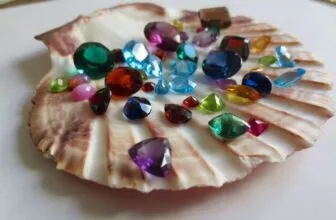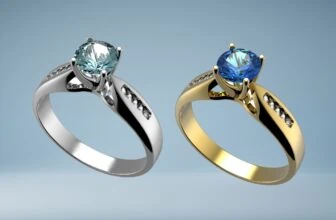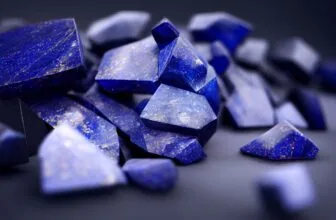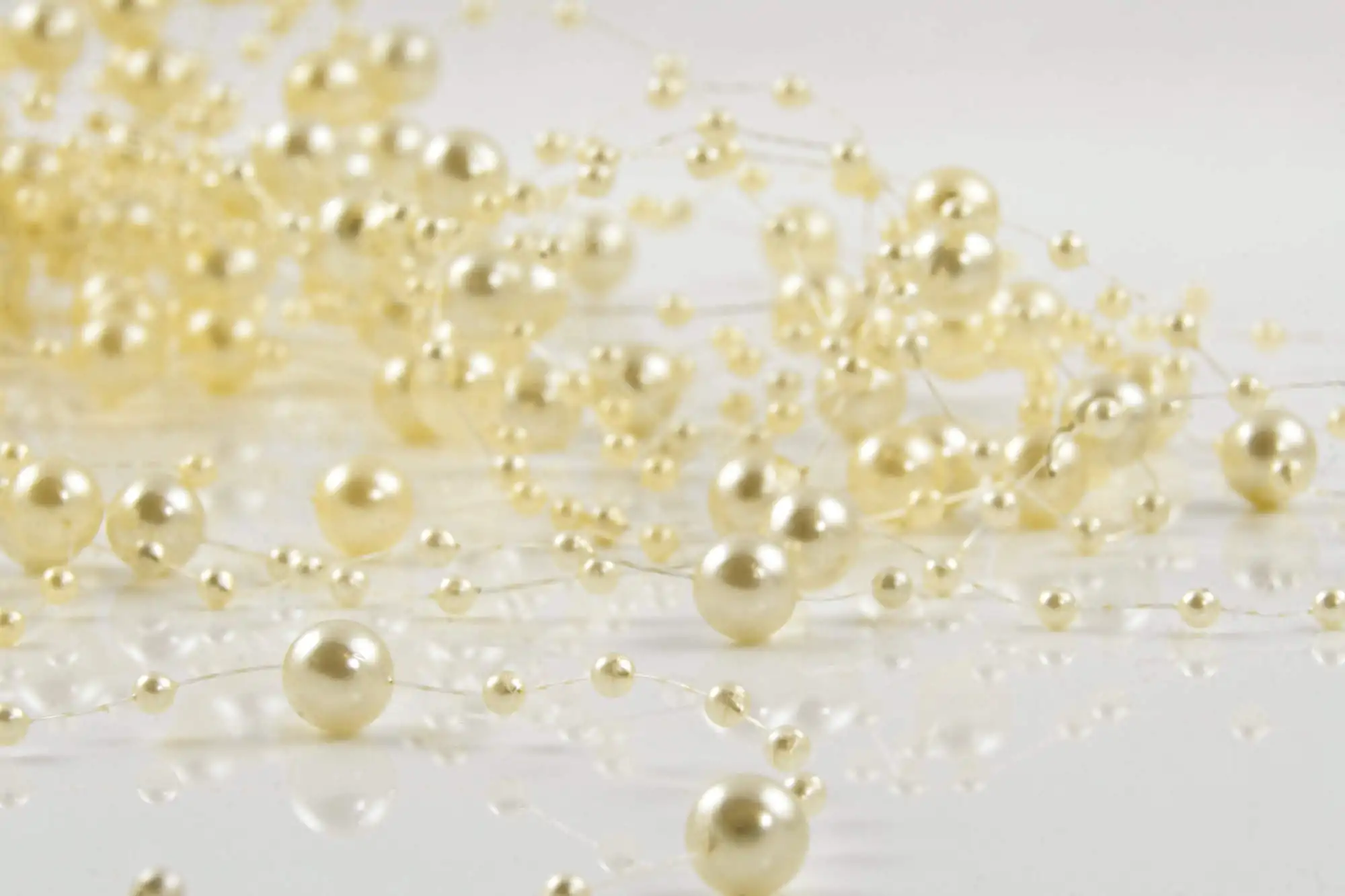
Table of Contents
If your pearls are starting to turn yellow, this can have a huge impact on how it looks.
Wait, what?! Pearls turn yellow?
Unfortunately, yes. Just like every organic thing, over time, pearls tend to change and age, especially if not properly taken care of. And as with almost everything, prevention is better than cure.
Here’s what you need to know about taking care of your pearls so you can prevent them turning yellow.
Yellow vs. Yellowed Pearls – What’s the Difference?
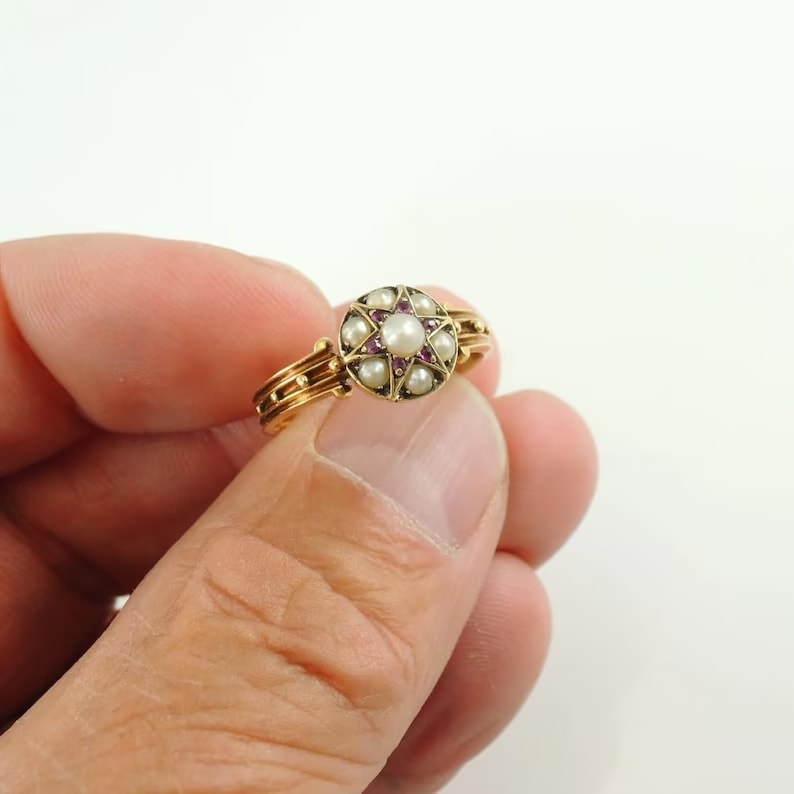
Yellow pearls and yellowed pearls are two different things and it’s important to know the difference. Yellow pearls refer to pearls that naturally occur in a yellow color. These pearls are formed when the mollusk secretes a yellow pigment during the process of pearl formation. Yellow pearls can vary in shades from light yellow to deep golden tones. They’re quite rare and highly valued in the world of jewelry.
On the other hand, yellowed pearls are pearls that were once white or another color but have become discolored over time. This discoloration can happen due to a variety of reasons, including exposure to light, chemicals, or even the natural oils from the wearer’s skin. Yellowed pearls may have a dull or cloudy appearance, and their value may be significantly diminished compared to their original state.
Yellowed pearls can often be restored to their original color through cleaning or other treatments. However, the process can be delicate and should be performed by a professional jeweler or pearl expert.
Why Do Pearls Turn Yellow?

Pearls are very soft organic gemstones (2.5 to 4 on the Mohs scale of hardness), made of layer upon layer of nacre secreted by a mollusc. As time passes, this organic substance is subject to change, due to natural processes that changes its composition. This is normal and can happen to any pearl, regardless of quality or how much you paid for it.
There are several other reasons why pearls may turn yellow:
- Natural aging: Over time, pearls may naturally yellow due to the aging process. This is because the organic substances that make up the pearl’s nacre may break down or become discolored over time.
- Exposure to light: Pearls that are exposed to sunlight or other sources of UV radiation may yellow over time. This is because UV radiation can break down the organic substances in the pearl’s nacre, causing it to become discolored.
- Chemical exposure: Pearls that come into contact with chemicals such as perfume, hairspray, or cleaning products may yellow over time. This is because these chemicals can react with the pearl’s nacre, causing it to become discolored.
- Contact with acidic substances: Pearls that come into contact with acidic substances such as lemon juice or vinegar may yellow over time. This is because the acid can react with the calcium carbonate that makes up the pearl’s nacre, causing it to become discolored.
- Poor storage: Pearls that aren’t stored properly may yellow over time. Exposure to high temperatures, humidity, or air pollution can cause the pearl’s nacre to break down or become discolored.
While yellowing can diminish the value of a pearl, it’s possible to restore its natural color through professional cleaning and other treatments. It’s recommended to consult with a reputable jeweler or pearl expert for proper cleaning and care of pearls.
Do Yellow Pearls Mean Fake Pearls?
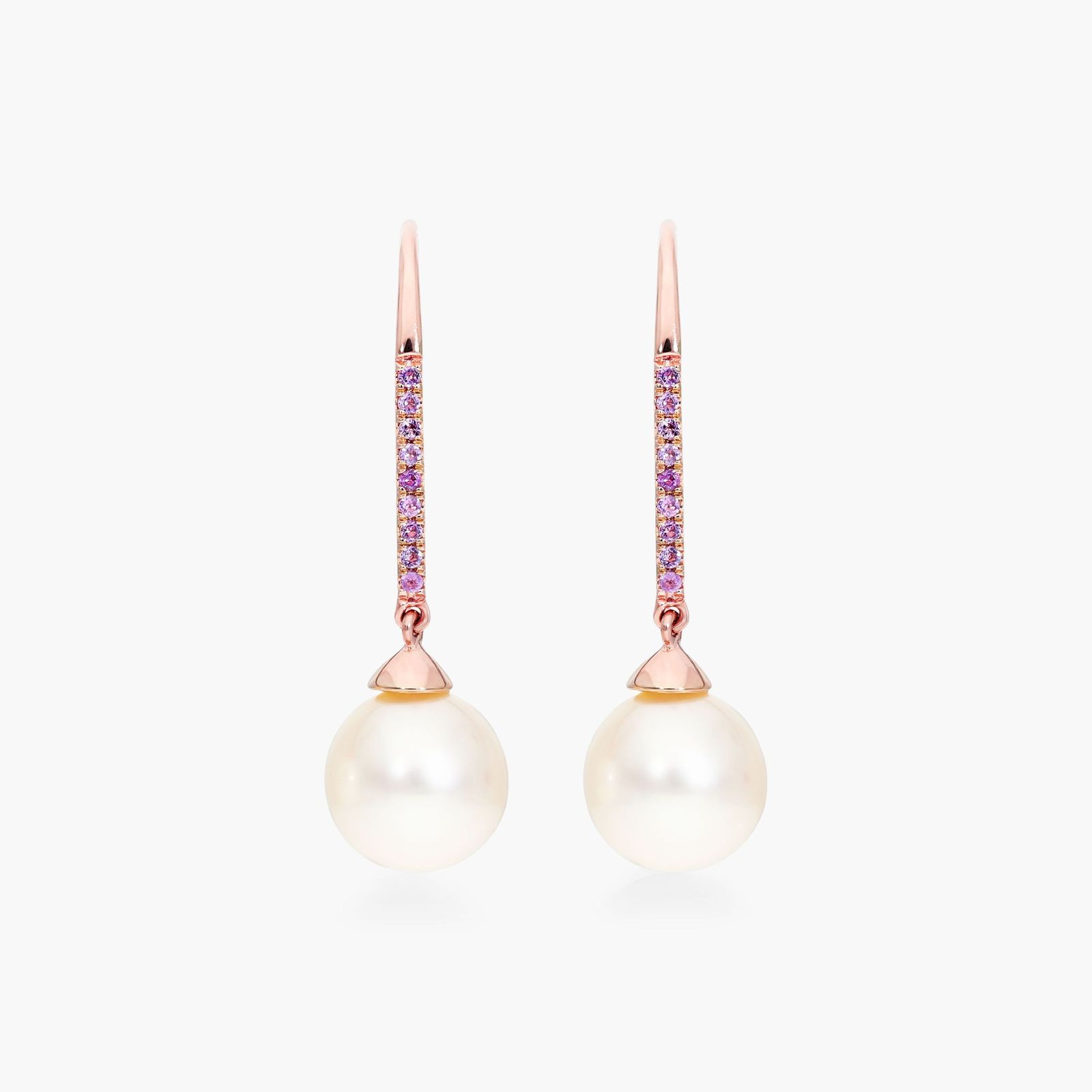
Some people worry that if their pearls are turning yellow, this means that they’re fake. Quite the opposite. Fake or imitation pearls almost never turn yellow, as they’re made of materials such as plastic and ceramic. Yellowing generally means that your pearls are organic and subject to change.
As mentioned earlier, pearls can come in a range of natural colors, including yellow. However, the rarity of yellow pearls means that some unscrupulous dealers may try to pass off fake pearls as genuine yellow pearls to increase their value. To determine if a yellow pearl is genuine, it’s important to consider a few factors:
- Surface texture: Genuine pearls have a smooth, lustrous surface. Fake pearls may have a rough, grainy texture or a too-perfect surface.
- Weight: Genuine pearls are heavier than fake pearls of the same size. This is because genuine pearls are made of layers of nacre, while fake pearls are often made of plastic or other materials.
- Nacre thickness: Genuine pearls have a thick layer of nacre, while fake pearls may have a thin layer of nacre or none at all.
- Price: Genuine yellow pearls are rare and valuable, so if a pearl is being sold for a very low price, it is likely to be fake.
- Certification: Genuine pearls may come with a certificate of authenticity from a reputable grading authority or jeweler.
How Does Yellowing Impact Pearls?
Apart from the obvious deterioration in freshness and color, yellowing can also indicate a breach in the strength of the pearl. When the nacre is dried out, it becomes brittle making it prone to fractures and chipping. The outer layers of nacre often start to chip and flake off, especially around the drill holes. There is also a higher chance that your pearl will shatter if knocked or bumped.
Yellowing can make the pearl appear dull or cloudy, affecting its luster and overall appearance. This can make the pearl less desirable for use in jewelry and may lower its value. Additionally, yellowing can be a sign of damage or degradation to the pearl’s nacre, which can impact its durability and longevity.
Can I Make a Yellowed Pearl White Again?
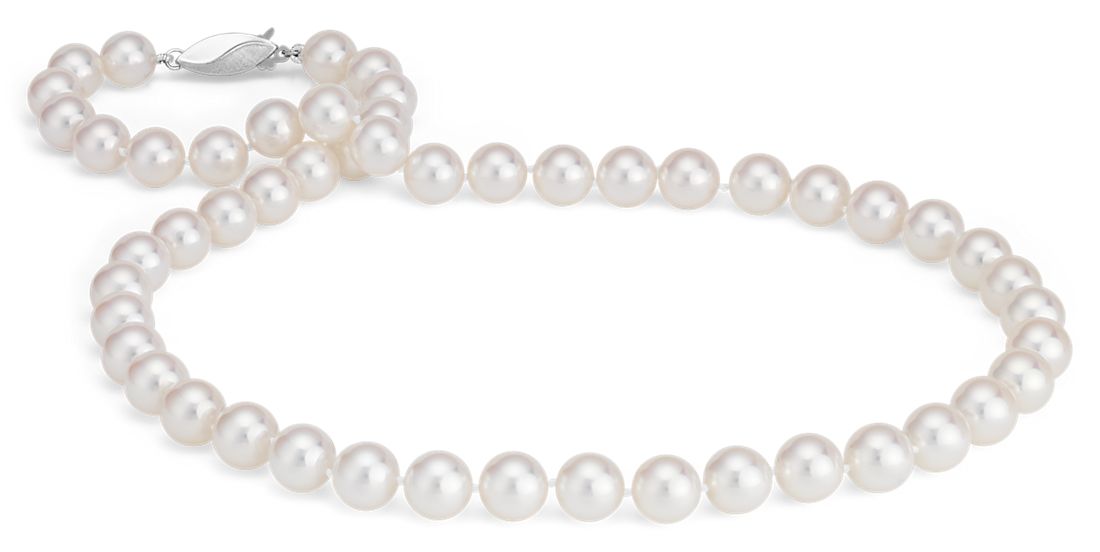
This depends on how much damage has been done. If the pearls have been drying out and dying slowly for a very long time, then it may not be possible to restore them to their former luster and color. Once the pearl starts to show flaking and chipping, it usually means that reversing the process is not possible.
There’s also what’s known as the ‘sunlight treatment’, where you have to first clean and rinse your pearls before laying them in direct sunlight. Your pearls may have to be exposed to direct sunlight all day every day, until you notice some difference in color. Some users say that doing this gives the pearls most of its ‘pearly’ color.
Tips on How to Make Yellow Pearls White Again
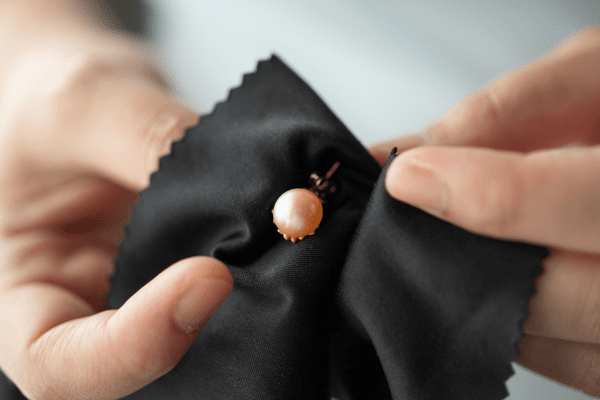
Here are some steps you can take to try to turn a yellowed pearl white again:
- Soak the pearl in a mild cleaning solution: Mix a small amount of gentle dish soap or mild detergent with warm water in a bowl. Soak the pearl in the solution for a few minutes, being careful not to scrub or rub the surface. Rinse the pearl thoroughly with clean water and pat dry with a soft cloth.
- Use a specialized pearl cleaner: There are commercial pearl cleaners available that are designed specifically for cleaning pearls. Follow the instructions on the product carefully, as some cleaners may contain harsh chemicals that can damage the pearl’s nacre.
- Consider professional treatment: If the pearl is severely yellowed or the above methods do not work, it may be necessary to seek professional help. A jeweler or pearl expert may be able to use specialized treatments such as bleaching or hydrogen peroxide to restore the pearl’s original color.
It’s worth noting that some pearls, particularly those that have been artificially colored, may not be able to be restored to their original white color. Additionally, it’s important to be careful when cleaning pearls, as rough handling or exposure to harsh chemicals can cause further damage. Always consult a reputable jeweler or pearl expert for advice on the proper care and cleaning of your pearls.
Please read our privacy and policy and terms of use if you’re planning to clean your pearls using methods suggested in this website.
In the case of pearls, prevention is much easier than cure, which is why they should be taken care of appropriately to avoid them drying out in the first place.
How Can I Prevent My Pearls from Turning Yellow?
While reversing the damage is difficult, preventing it from happening in the first place is much easier.
1. Wear Them
The simple solution to keeping your pearls from turning yellow is to simply wear them more. As pearls come into contact with air and moisture, they receive the hydration they require keeping them lustrous and beautiful.
Your body oils also act as a moisturizer for the pearls, keeping them from drying out. Wearing your pearls one or twice a month is sufficient to maintain the color of your pearls.
There is a caveat to this, however. Too much sweat can cause pearls to lose their shine so always ensure to take your pearls off if you are engaging in any vigorous activity.
2. Store Them Carefully
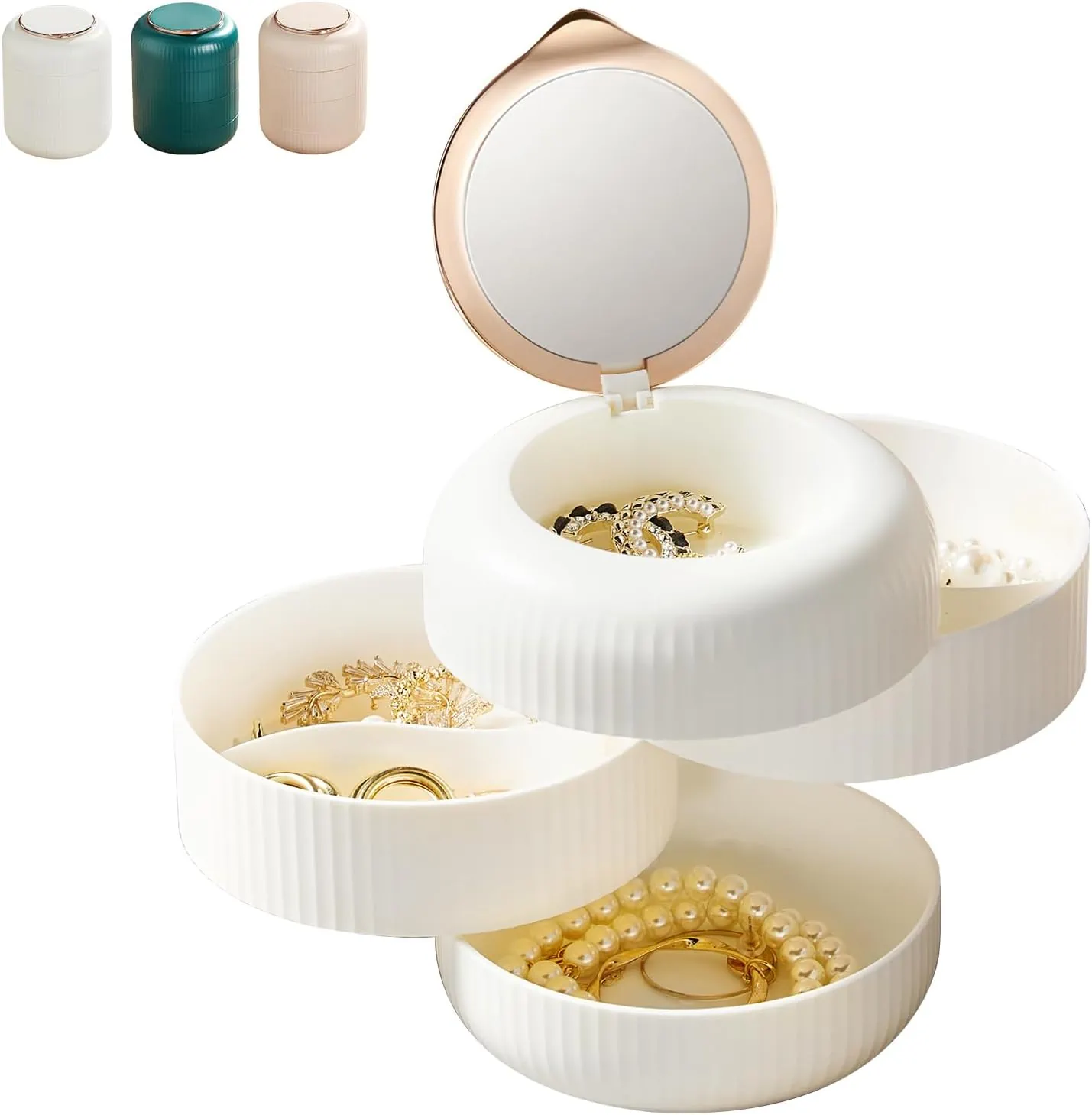
Proper storage is essential to keep pearls from yellowing or becoming damaged. Here are some tips for storing pearls properly:
- Keep pearls away from heat and sunlight: Exposure to heat and sunlight can cause pearls to dry out and lose their luster. Store pearls in a cool, dry place away from direct sunlight and sources of heat.
- Keep pearls away from chemicals: Pearls are sensitive to chemicals such as perfumes, cosmetics, and hairspray. Avoid spraying these substances directly onto your pearls and store them separately from other jewelry to prevent scratching or chemical damage.
- Store pearls in a soft, protective pouch or box: To prevent scratching or damage, store pearls in a soft cloth pouch or a jewelry box lined with soft fabric. Avoid storing pearls in airtight containers, as this can cause them to dry out.
By following these tips, you can help keep your pearls looking their best and prevent yellowing or other forms of damage. It’s also a good idea to have your pearls professionally cleaned and inspected periodically to ensure they’re in good condition.
3. Wipe Them
Before you store the pearls away, always give them a quick wipe over with a soft cloth. This will get rid of any excessive sweat, body oils, chemicals or grime. These can harm your pearls over time and affect the color.
General Pearl Care Tips
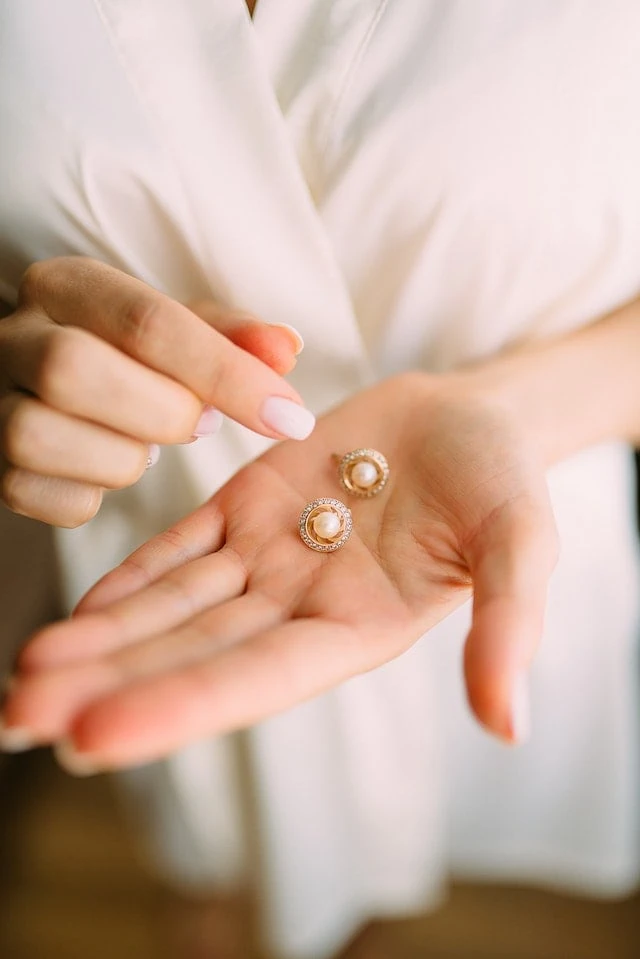
Because pearls are quite fragile gemstones, taking good care of them will ensure that they remain lustrous for decades… maybe even a lifetime and beyond. Here is everything you need to know about how to take care of pearls:
- Handle pearls with care: Pearls are delicate and can be easily scratched or damaged. Handle them gently and avoid exposing them to rough surfaces or sharp objects.
- Store pearls properly: Proper storage is essential to prevent damage and yellowing. Store pearls in a soft cloth pouch or jewelry box lined with soft fabric, away from direct sunlight, heat, and sources of humidity. Do not store pearls in airtight containers, as this can cause them to dry out.
- Keep pearls away from chemicals: Pearls are sensitive to chemicals such as perfumes, cosmetics, and hairspray. Avoid spraying these substances directly onto your pearls and store them separately from other jewelry to prevent scratching or chemical damage.
- Clean pearls regularly: Clean pearls with a soft, damp cloth and mild soap. Avoid using harsh chemicals or abrasive cleaners, as these can damage the pearl’s delicate surface. Rinse pearls thoroughly with clean water and pat dry with a soft cloth.
- Wear pearls regularly: Pearls benefit from contact with the skin’s natural oils, so wearing them regularly can help keep them lustrous and prevent yellowing. However, avoid wearing pearls in situations where they may be exposed to excessive heat or chemicals.
- Get pearls professionally inspected and cleaned: It’s a good idea to have your pearls professionally inspected and cleaned periodically to ensure they are in good condition. A jeweler or pearl expert can identify any signs of damage or yellowing and recommend appropriate care and maintenance.
- Consider restringing pearls: Over time, the silk thread that holds pearl necklaces together can become stretched or weakened. Consider having your pearl necklace restrung every few years to prevent breakage and ensure the pearls are securely fastened.
By following these guidelines, you can help keep your pearls looking their best and ensure they last for generations to come.
FAQ’s About Yellowing Pearls
1. Why do pearls turn yellow?
Pearls can turn yellow due to a variety of reasons, including exposure to sunlight, heat, chemicals, and the natural aging process of the pearl’s nacre.
2. Are yellow pearls real?
Yes, yellow pearls can be real. Some types of pearls, such as golden South Sea pearls, are naturally yellow in color.
3. Does yellowing indicate that a pearl is fake?
No, yellowing does not necessarily indicate that a pearl is fake. Pearls can turn yellow due to a variety of reasons, including natural aging and exposure to environmental factors.
4. Can yellowed pearls be restored to their original color?
In some cases, yellowed pearls can be restored to their original color through professional treatments. However, not all pearls can be restored, and the success of the treatment will depend on the cause and severity of the yellowing.
5. How can I prevent my pearls from yellowing?
Proper storage, regular cleaning, and careful handling can help prevent pearls from yellowing. Keep pearls away from heat and chemicals, store them in a soft cloth pouch or jewelry box, and clean them gently with a soft cloth and mild soap.
6. Is it safe to clean yellowed pearls with bleach or hydrogen peroxide?
No, it’s not safe to clean pearls with bleach or hydrogen peroxide, as these chemicals can damage the pearl’s delicate surface.
7. Can yellowed pearls still be valuable?
Yes, yellowed pearls can still be valuable, particularly if they are rare or have historical significance. The value of a yellowed pearl will depend on a variety of factors, including its type, size, and condition.
8. Do all pearls turn yellow with age?
No, not all pearls turn yellow with age. Some pearls may maintain their original color, while others may develop a different color or iridescence.
9. Can I wear yellowed pearls?
Yes, you can still wear yellowed pearls if you like their appearance. However, keep in mind that yellowed pearls may be more fragile and prone to damage than pearls that are in their original condition.
10. Are there any natural remedies to remove yellowing from pearls?
No, there are no proven natural remedies to remove yellowing from pearls. Attempting to use household or natural cleaning products on pearls can cause damage, so it’s best to seek professional help if you want to restore yellowed pearls.
Wrapping Up
Yellowing pearls can be a natural occurrence due to various factors such as environmental conditions, age, and exposure to chemicals. However, with proper care and maintenance, pearls can maintain their natural luster and shine for years to come. It’s important to handle them with care, store them properly, and clean them regularly.
And if your pearls have already turned yellow, there are professional treatments available to help restore them to their original beauty. With the right care, your pearls can continue to be a treasured piece of jewelry for generations to come.


